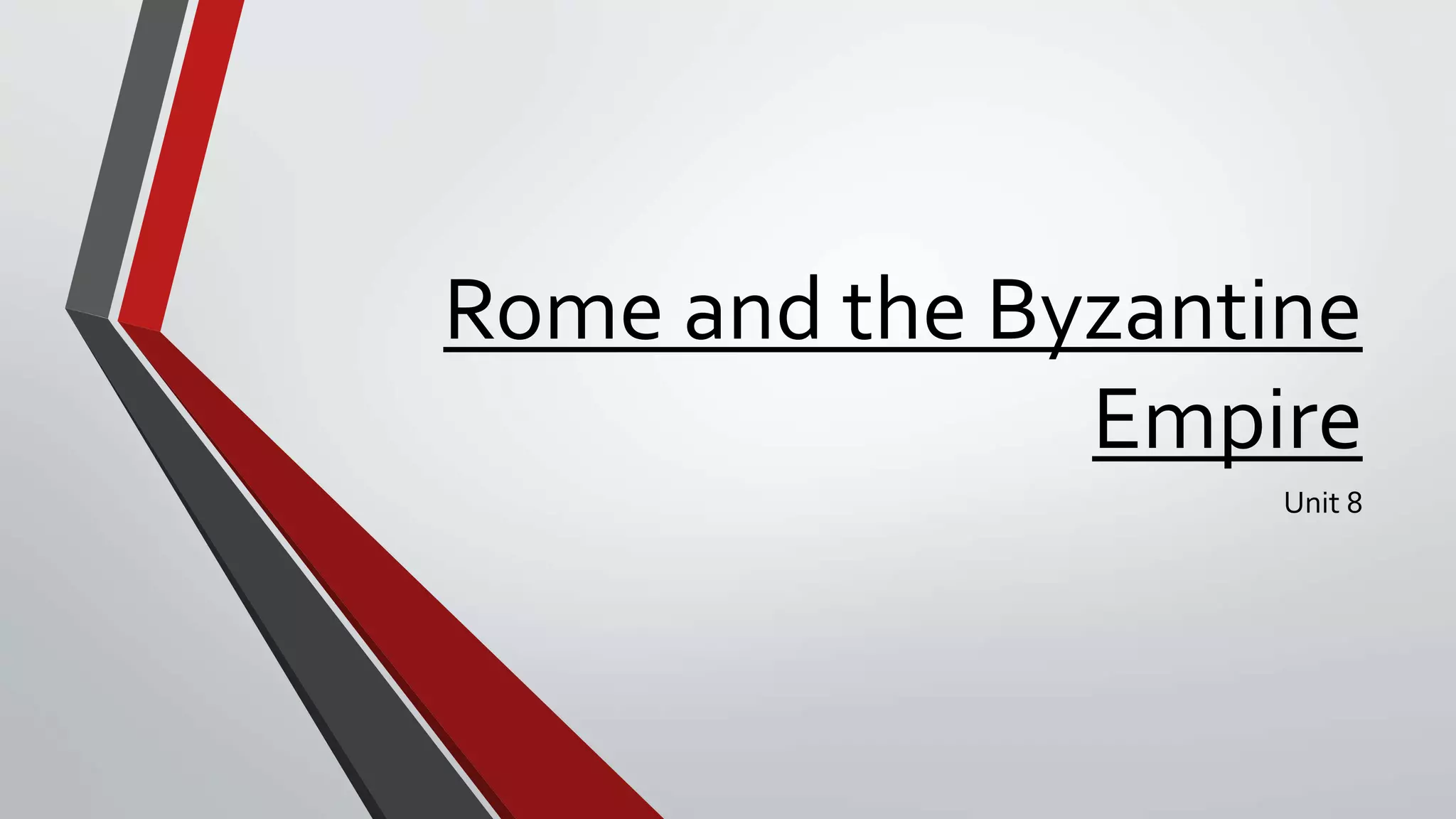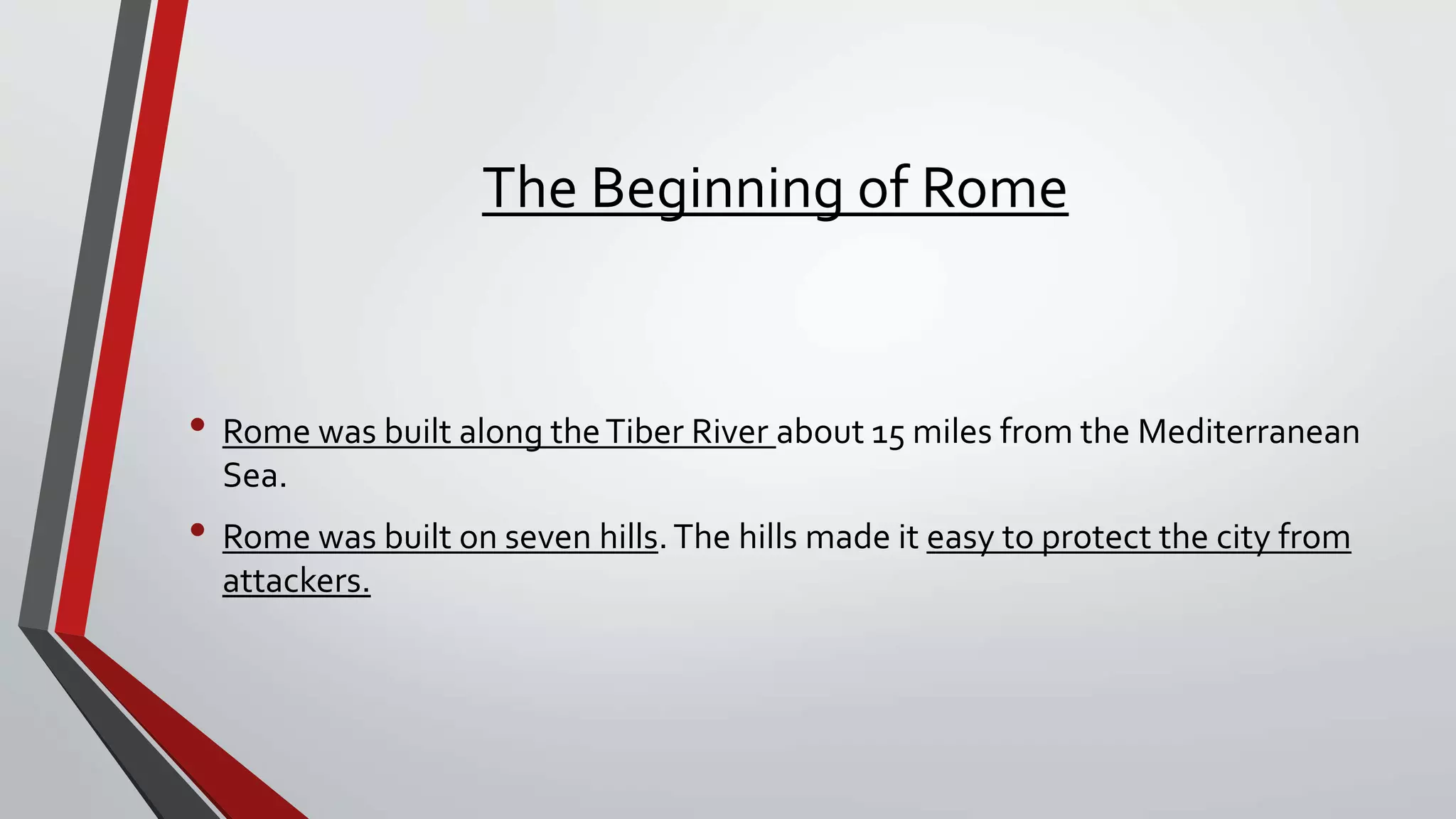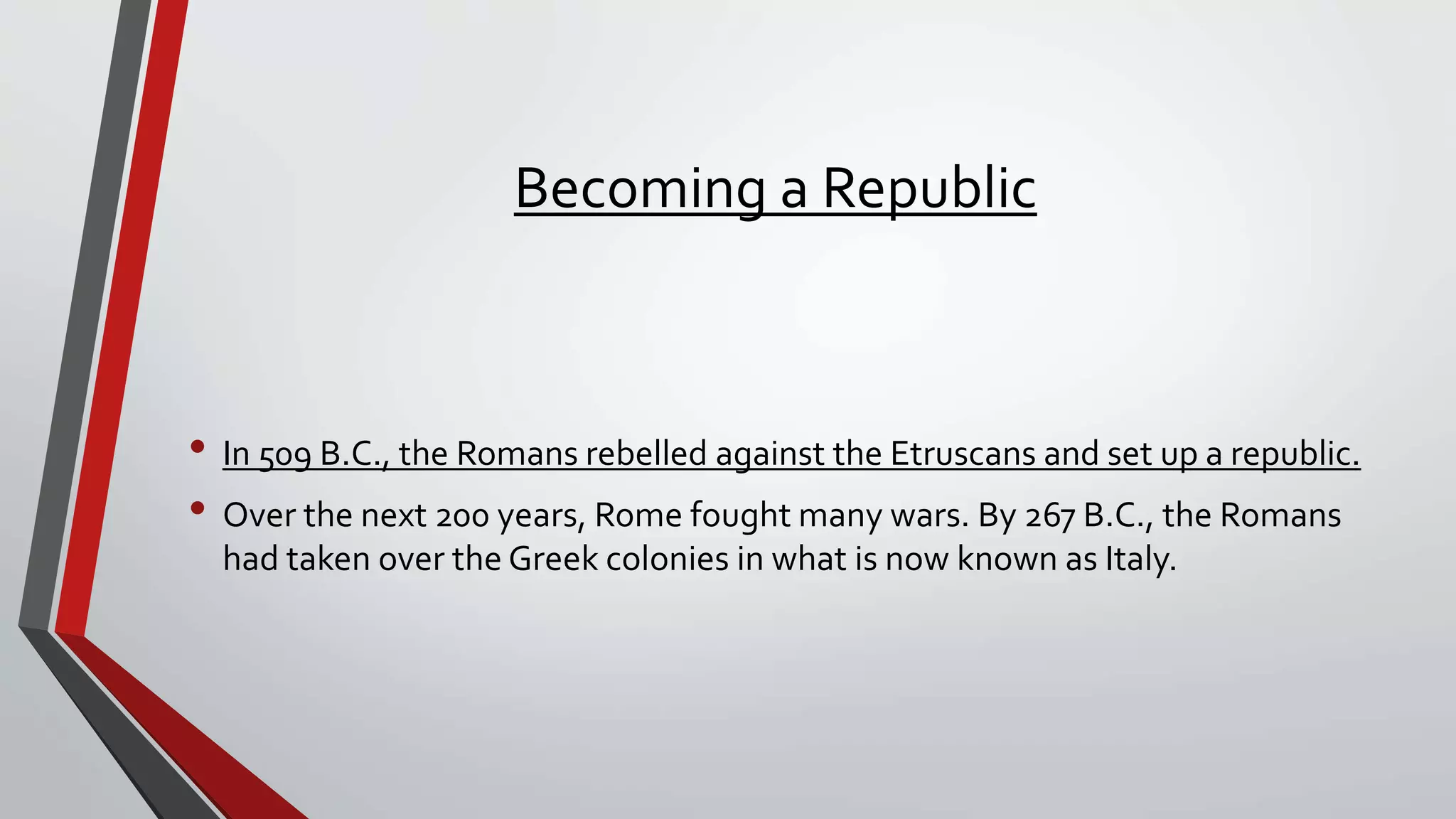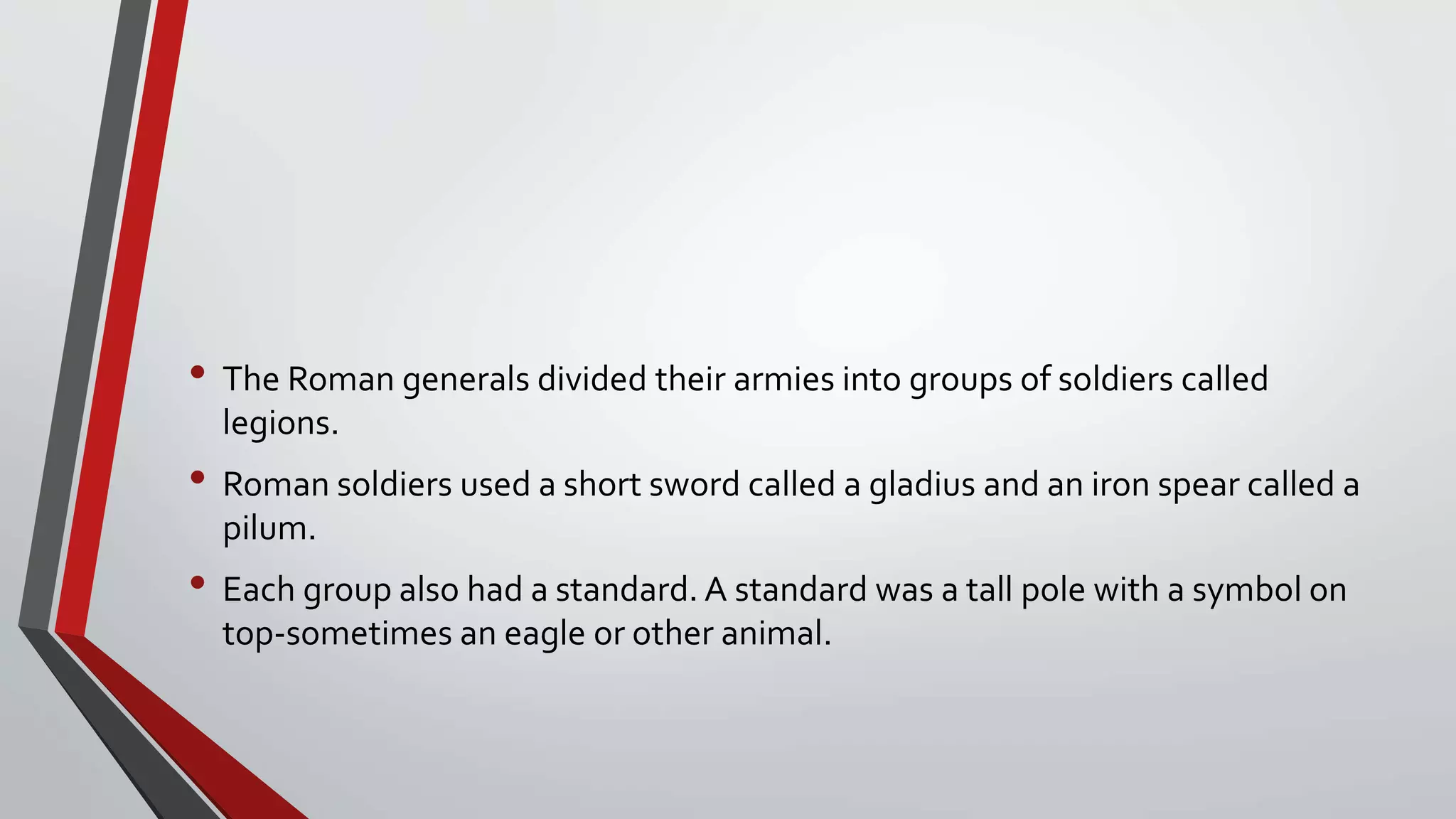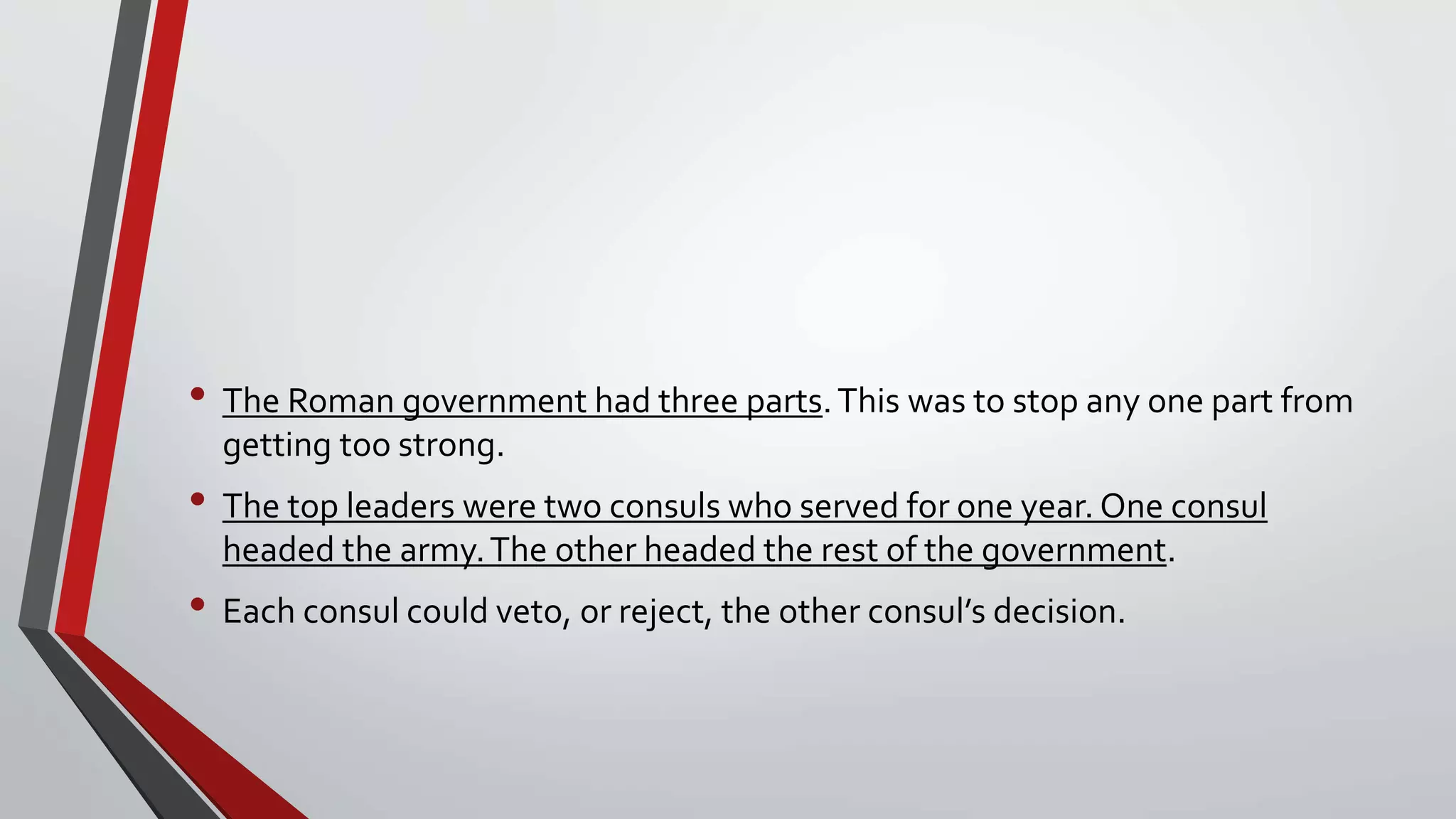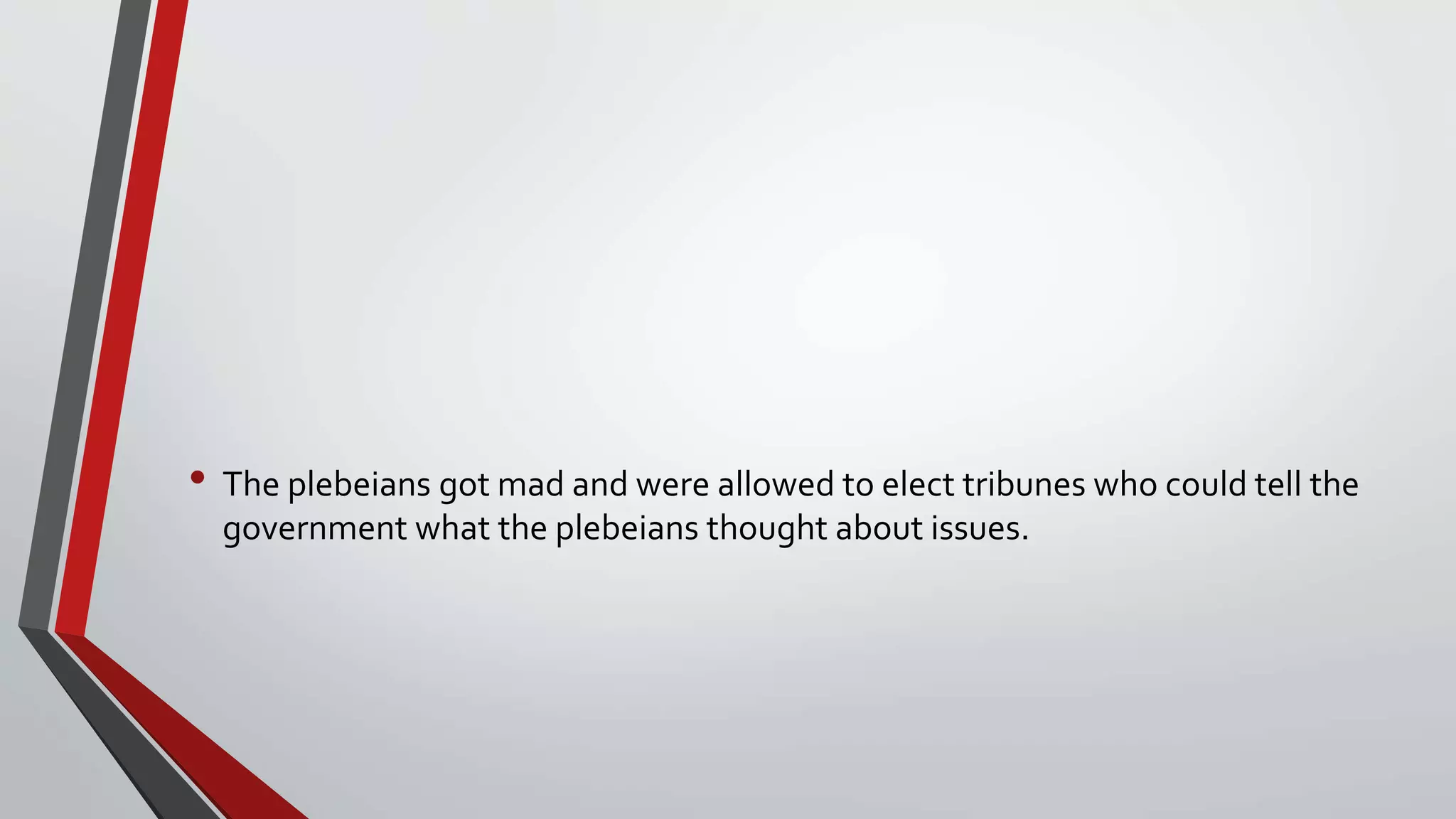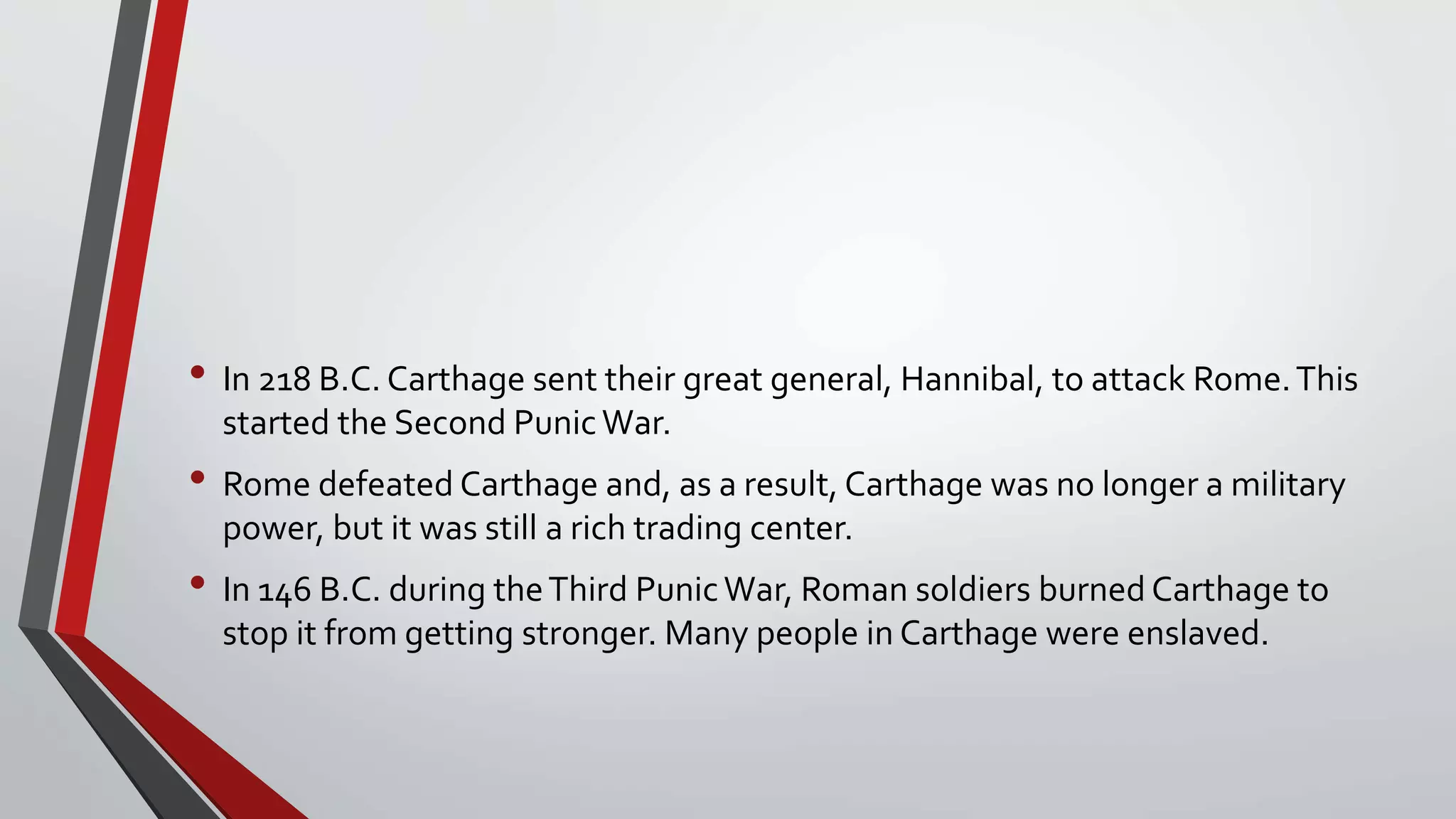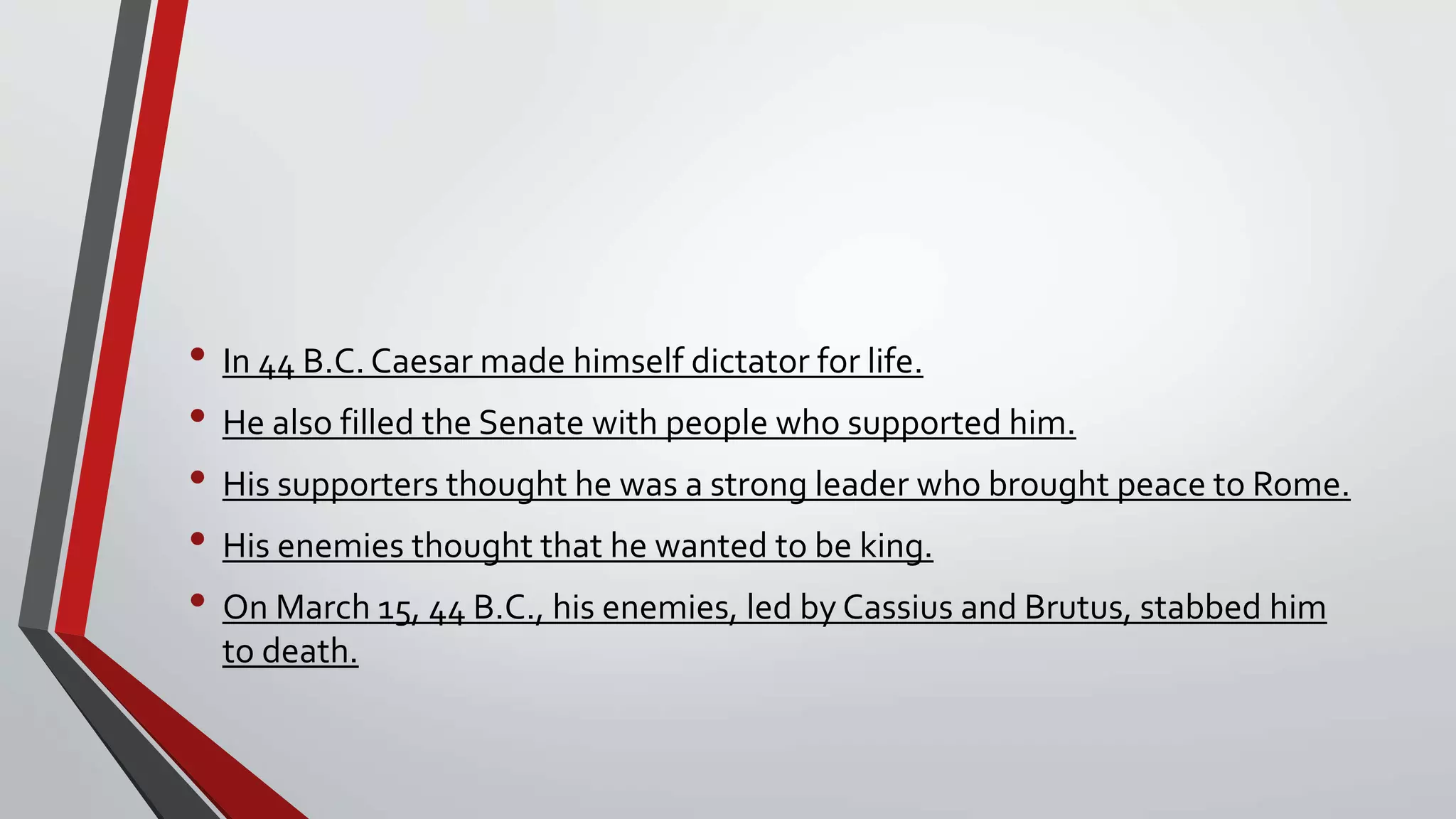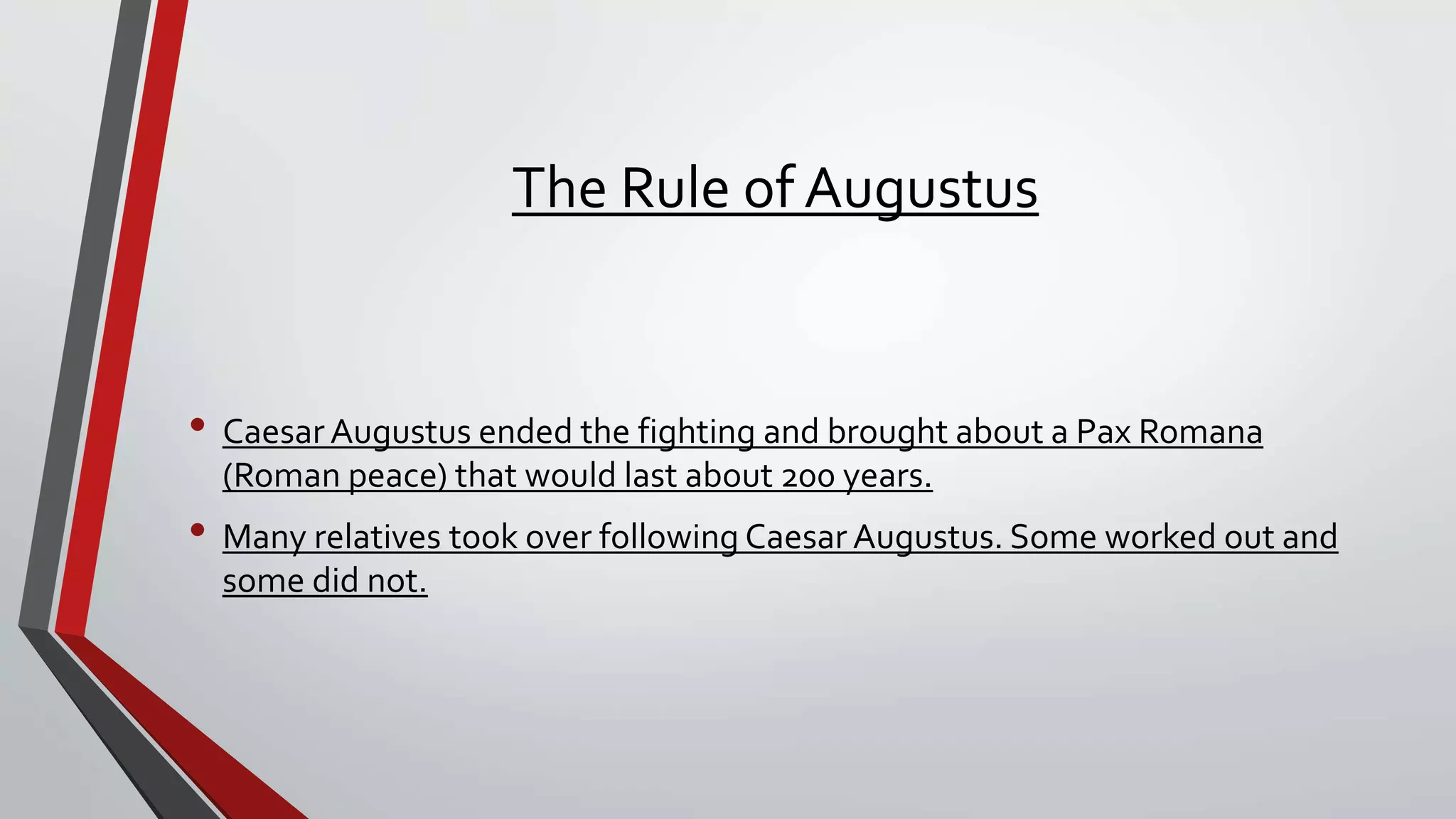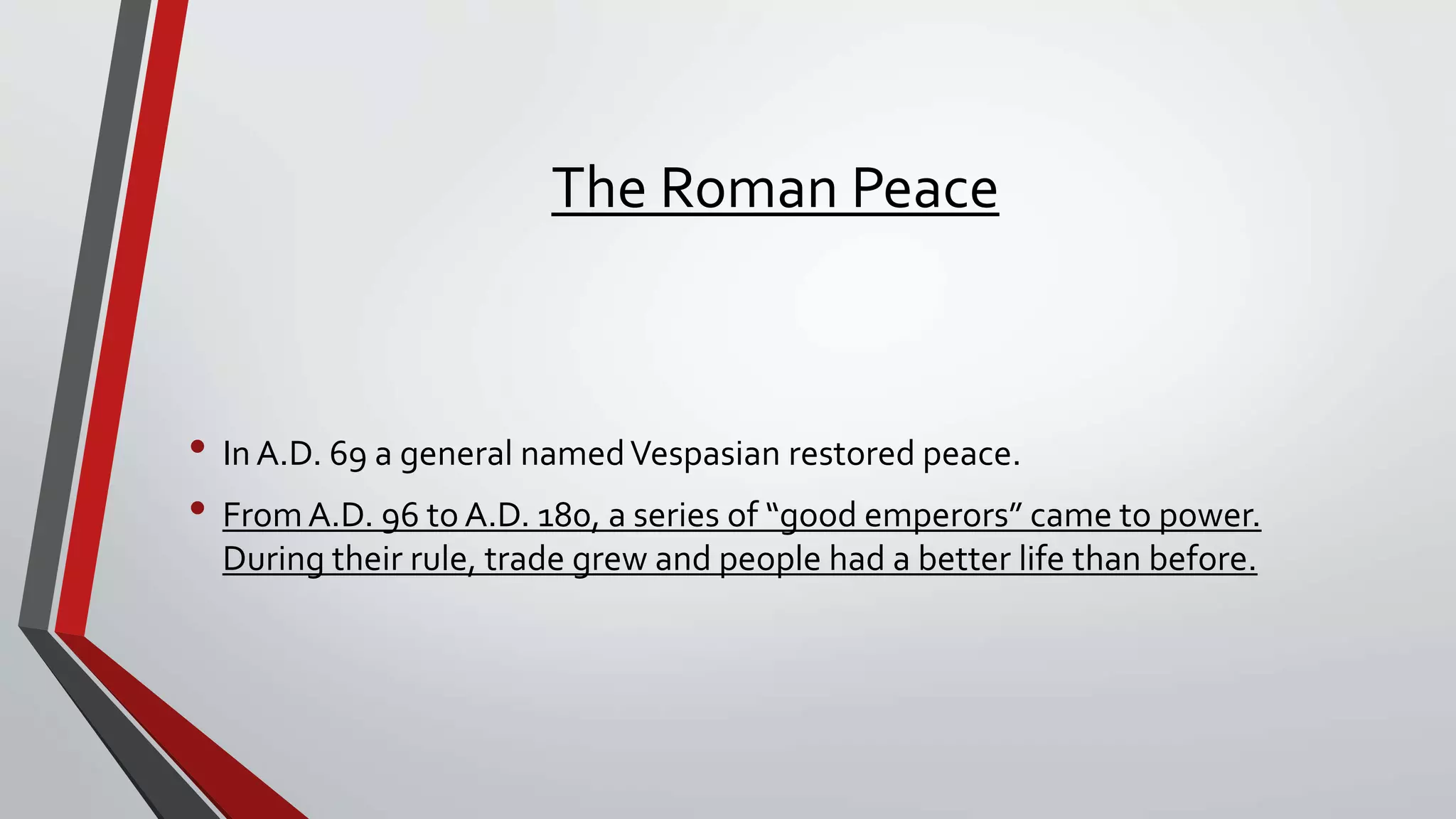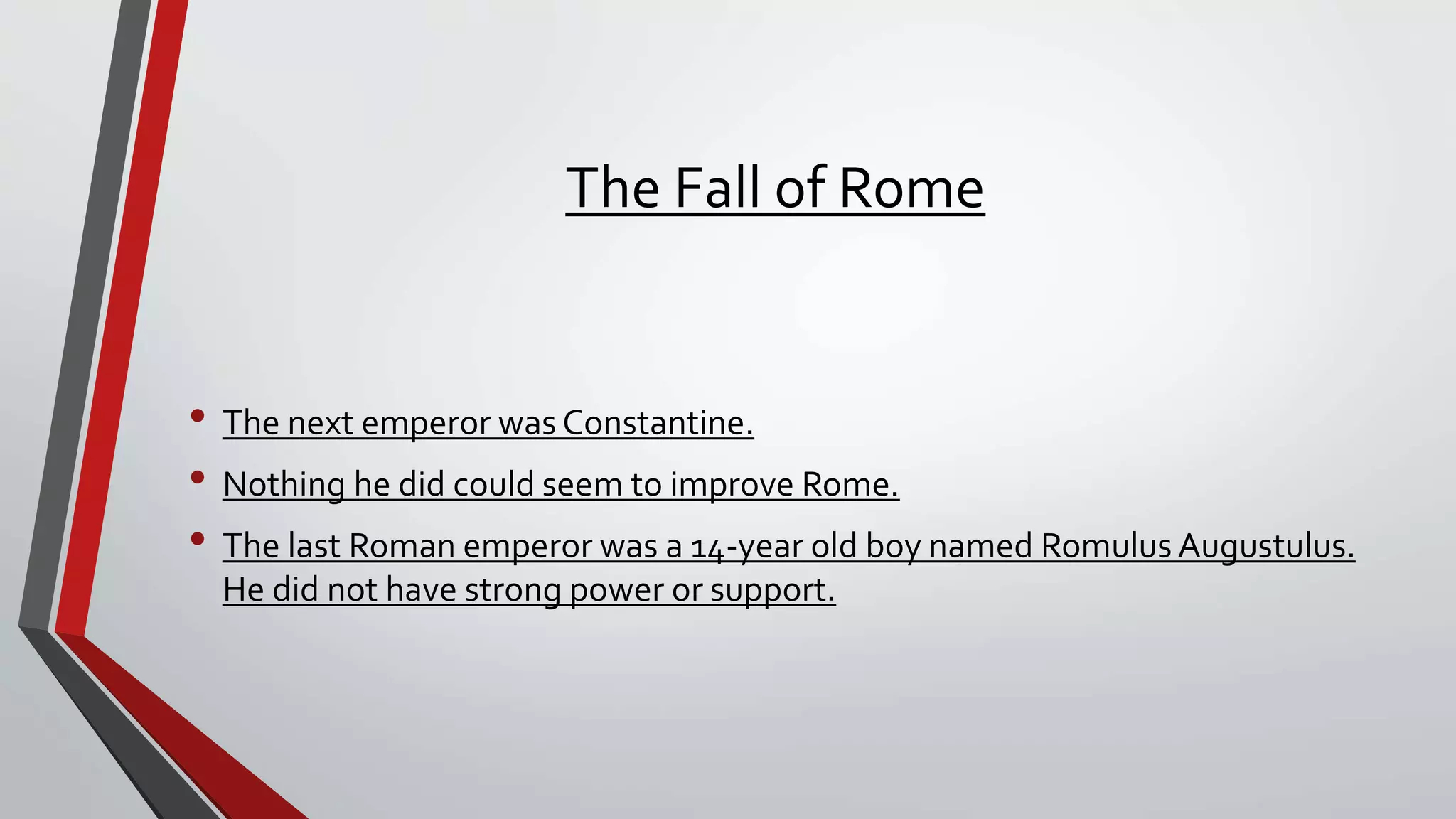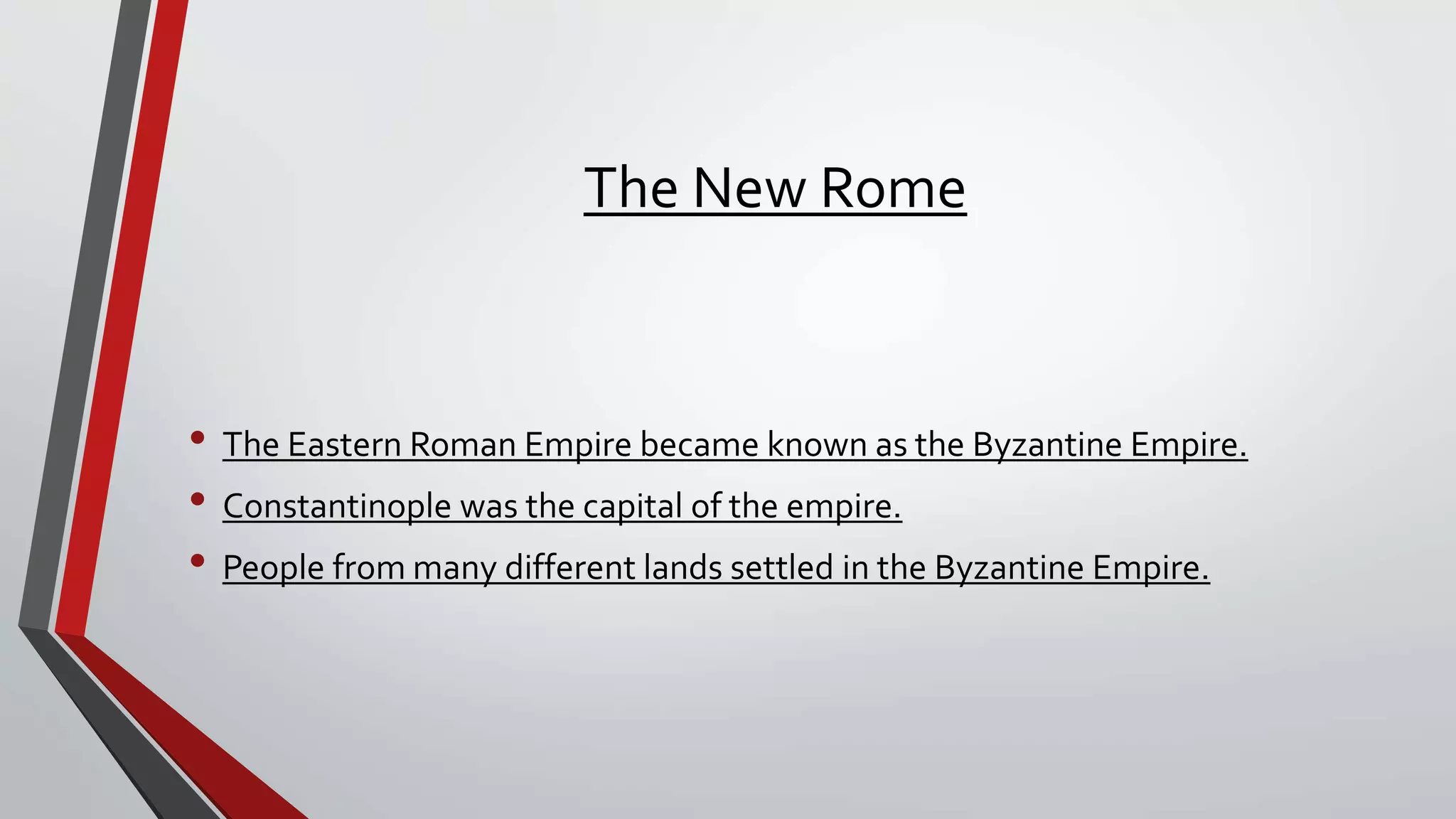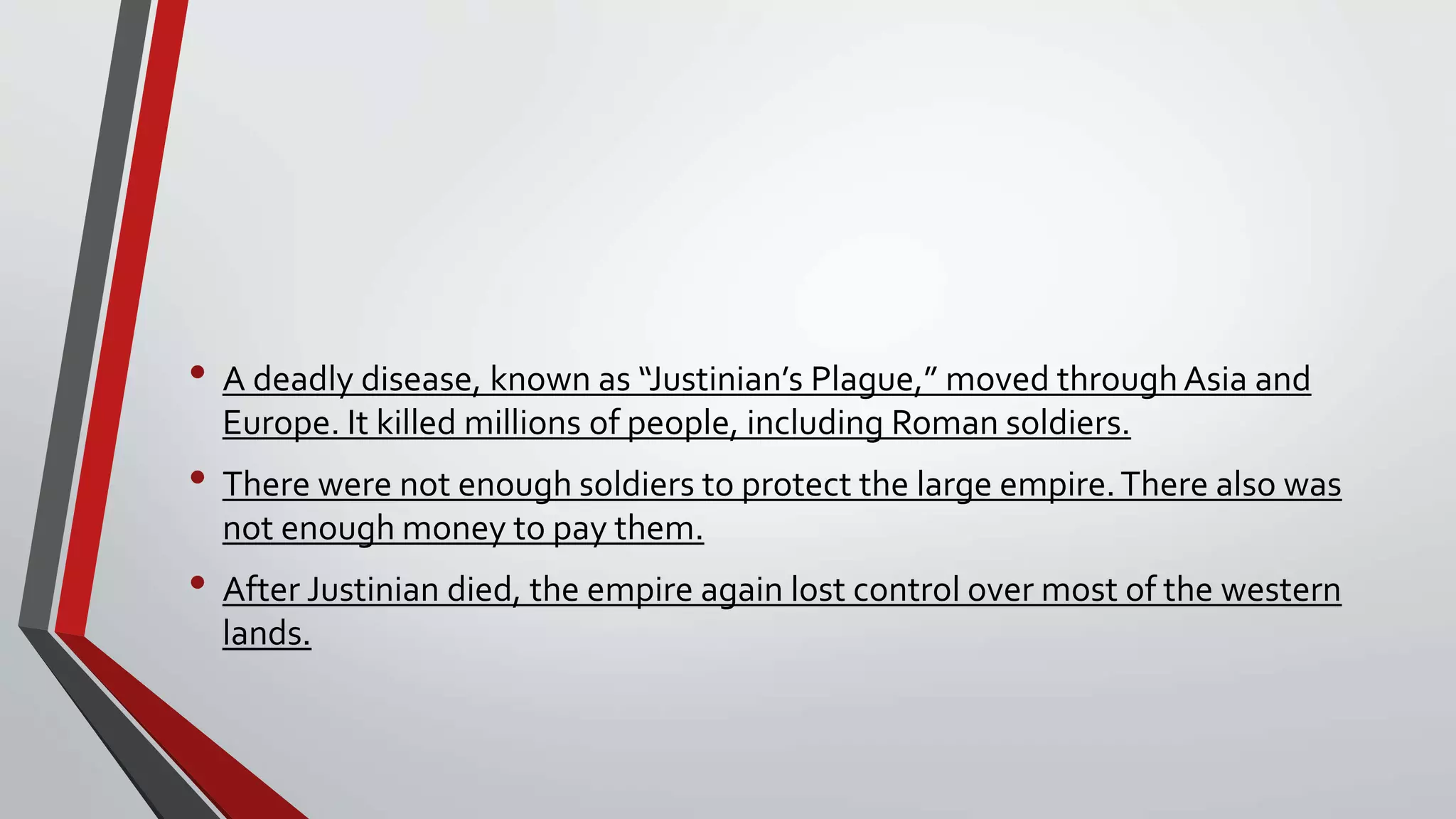The document provides an overview of the history of Rome and the Byzantine Empire. It discusses the founding and early government of Rome as a republic, the Punic Wars with Carthage, the rule of Julius Caesar and the transition to an empire under Augustus. It then covers key events and figures in the Roman Empire like the Pax Romana and the "good emperors", before addressing the decline of the western empire and the rise of the Byzantine Empire with Constantinople as its capital under Emperor Justinian.
